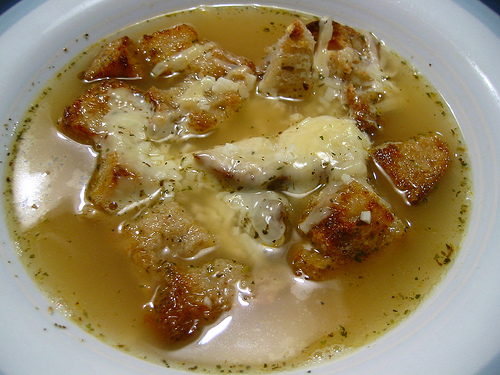Cue the trumpets! I hope you are excited and hopefully not too hungry, as we are going on another culinary journey through the history of Europe without breaking the budget.
I can’t help but develop a sense of respect for importance of bread in the Italian diet especially during poverty stricken period of the 19th century. Panada, a form of bread soup composed of bread boiled in water or other liquids was an inexpensive dish that utilised bread as its centrepiece. It was a vital form of sustenance regional to the north-east of Italy frequently prepared for the elderly and ill.
The simplicity and versatility of Panada stood out for me; cooking the bread through boiling it in liquids not only changes its texture but also may result in a sweeter flavour through breaking down it’s sugars. This allowed Panada to be served as a either sweet or savoury dish which was evident through the influence of Italian cuisine in other areas of the world.
French cuisine enriches Panada through the addition of butter, milk, cream or egg yolks whereas in British cuisine, the dish is flavoured with regional ingredients such as nutmeg and Zante currants (traditionally used in British deserts such as Christmas cake and pudding).
This dish in particular, exemplifies the meagre food habits as described in Heltosky’s article. Panada was in part due to Italy’s unevenly developed economy of the late 19th century. The primary ingredients of bread and water demonstrates how an inadequate died was a fact of life for much of the Italian population of the time.
The dish also demonstrates the regional diversity of starches consumed through-out Italy with bread and rice being more commonly consumed in the North as opposed to pasta and polenta consumed in the southern regions.
Photo source:
savorynotebook.blogspot.com
